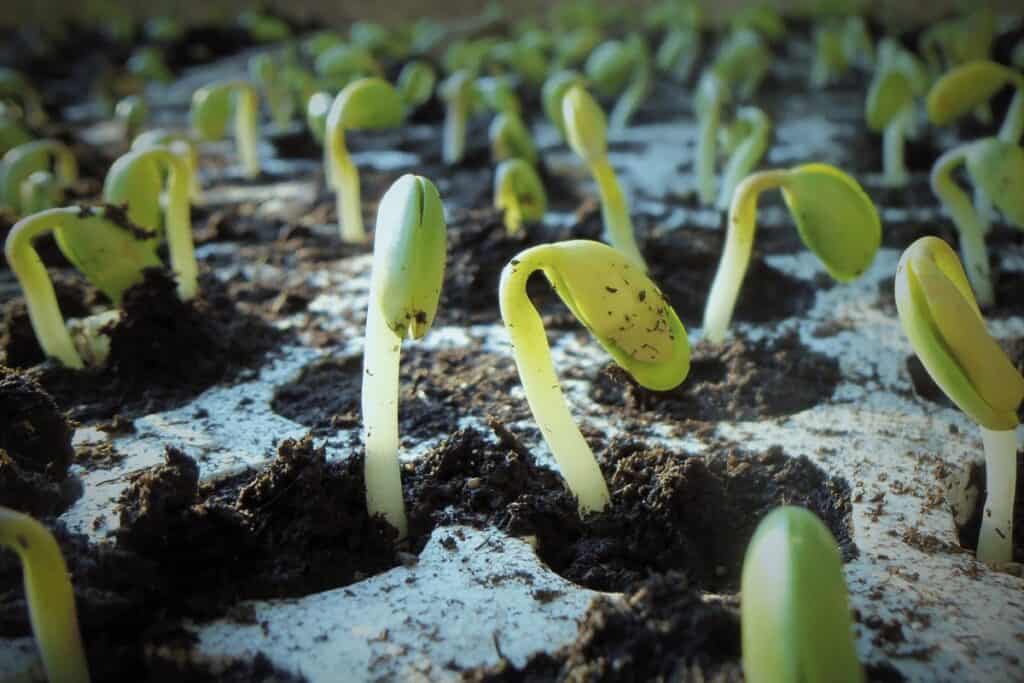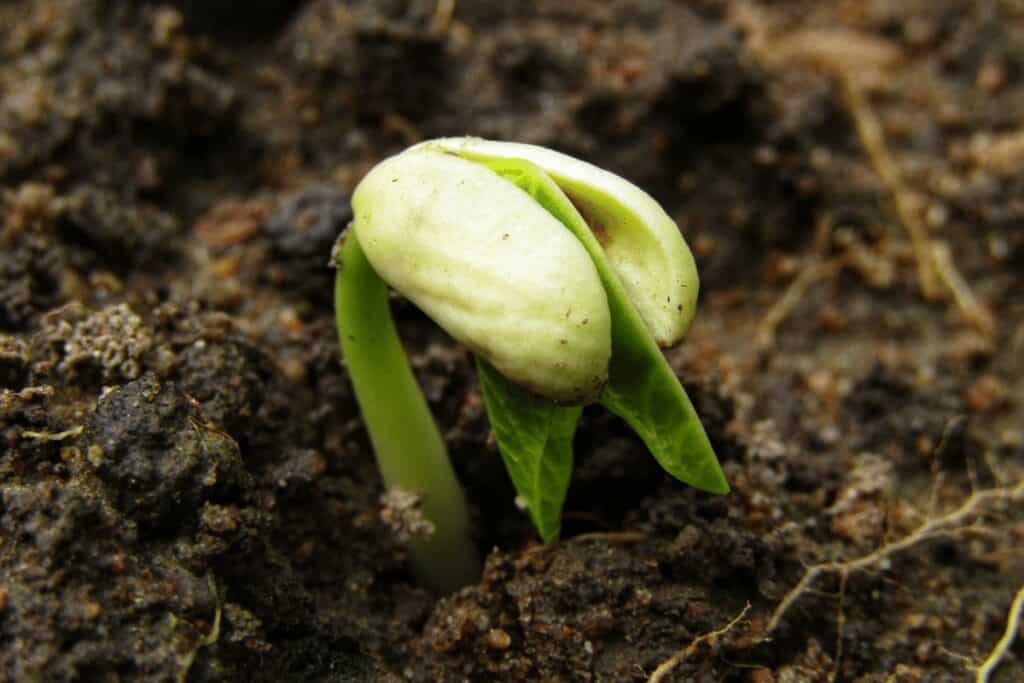If you’re looking to grow green beans, it’s essential to understand the optimal conditions for germination and growth. This article aims to provide a comprehensive guide on how to grow green beans, with a focus on soil and air temperature, planting methods, and care tips.
Optimal Soil and Air Temperature
Green beans are sensitive to soil temperature, and for optimal growth, it’s best to plant them when the soil temperature is between 70 and 80 degrees Fahrenheit [1]. If the soil temperature falls below 60 degrees, the seeds will germinate more slowly, and they may become susceptible to rot. The air temperature is also a crucial factor in the growth of green beans. Ideally, the air temperature should be between 65 and 85 degrees Fahrenheit, and the plants tend to stop flowering in the extreme heat of summer [1][3].

Planting Methods on How to Grow Green Beans
When planting green beans, you can either use pole beans or bush beans. Pole beans require trellising, while bush beans do not. If you choose to plant pole beans, you need to set up a trellis for the plants to climb on [3].
To plant green beans, first, you need to prepare the soil by adding organic matter and ensuring good drainage. Plant the seeds 1-2 inches deep and 2-4 inches apart. If you’re planting bush beans, space them 12-18 inches apart, while for pole beans, space them 3-4 inches apart. Water the seeds immediately after planting and keep the soil consistently moist throughout the germination process [1].
Care Tips on How to Grow Green Beans

Once the green beans start growing, it’s essential to provide them with adequate care to ensure optimal growth. Here are some care tips for green beans:
- Watering: Green beans require consistent moisture, especially during the flowering and fruiting stages. Water the plants regularly, ensuring that the soil remains moist but not waterlogged. Avoid overhead watering, as this can cause disease and fungal issues. Instead, use a drip or soaker hose to water the plants at the base [1].
- Fertilizing: Green beans require nitrogen-rich fertilizer to promote growth. You can use organic fertilizers such as compost or manure, or a commercial fertilizer with a balanced NPK ratio. Apply the fertilizer before planting and again when the plants start to flower [1].
- Pest Control: Green beans are susceptible to various pests, including aphids, spider mites, and bean beetles. To control pests, you can use organic methods such as neem oil or insecticidal soap. Alternatively, you can use chemical insecticides, but be sure to read and follow the label instructions carefully [1].
Conclusion and final thoughts 💭
Conclusion on How to Grow Green Beans
To ensure the best growth and harvest of your green beans, it’s important to follow the label instructions carefully when it comes to fertilizers, pesticides, and other products. Additionally, be sure to harvest your beans at the appropriate time, which varies depending on whether you are growing bush or pole beans.
Bush beans are typically ready to harvest all at once about 50-55 days after planting, while pole beans may take up to 65 days and can be harvested throughout the season [1].
To help the soil retain moisture and maintain a consistent temperature, consider applying a layer of mulch around your bean plants [2]. When planting green beans, sow the seeds directly into the soil about 1-2 inches apart and thin them to a spacing of 3-4 inches once they have sprouted [3].
With these tips in mind, you can enjoy a bountiful harvest of green beans from your garden.
FAQS
What is the best time to plant green beans?
Green beans are warm-season crops that prefer soil temperatures of at least 60°F (15.5°C). The best time to plant green beans is in the spring after the last frost has passed and the soil has warmed up. In warmer climates, you can also plant a fall crop in late summer. [3]
Do green beans need a lot of water?
Green beans require consistent moisture to grow well, but they don’t like waterlogged soil. Aim to keep the soil evenly moist, but not waterlogged. You can water your green beans deeply once a week, or more frequently during hot and dry weather. [1]
How should I fertilize my green beans?
Green beans don’t require a lot of fertilizer, but they benefit from a balanced fertilizer such as a 10-10-10 formula. Work the fertilizer into the soil before planting or apply it as a side dressing when the plants are about 4-6 inches tall. Avoid using too much nitrogen fertilizer, as it can result in leafy growth at the expense of bean production. [3]
How can I support my green bean plants?
Green beans are climbing plants that benefit from support to keep them off the ground and make harvesting easier. You can use a trellis, stakes, or a bean cage to support your green bean plants. Plant your seeds or seedlings near the support and train the vines to climb up it as they grow. [1]
How can I harvest my green beans?
Green beans are ready to harvest when the pods are firm, crisp, and snap easily when bent. You can harvest your green beans by picking them by hand or using scissors to snip them off the vine. Pick your beans every 2-3 days to encourage more production, and avoid leaving mature beans on the plant, as this can slow down production. [2]
How long does it take for green beans to grow?
Most green bean varieties take between 50-65 days to mature, with some pole bean varieties taking as long as 70-80 days. Once the plants start producing green beans, they will have a harvest window of between 2-6 weeks, depending on the variety and your conditions [2].
Are green beans easy to grow?
Yes, green beans are generally considered to be an easy crop to grow. They are relatively low-maintenance, can be grown in a variety of environments, and are resistant to many pests and diseases [1].
How do you grow perfect green beans?
To grow perfect green beans, it is important to choose a good variety, prepare the soil properly, and provide the plants with adequate sunlight and water. You can also use a trellis or other support structure to help the plants grow upward and prevent them from getting tangled. It is also important to harvest the beans regularly to encourage the plants to continue producing [2].
Do green beans need a lot of sunlight to grow?
Yes, green beans require a lot of sunlight to grow properly. They should be planted in an area that receives at least six hours of direct sunlight each day [1].
What month is best to grow green beans?
Green beans should be planted after the soil temperature has warmed to at least 48°F (or 9°C). It is best to follow the growing instructions on your seed packet and avoid planting too early in the season, as soil that is too wet or too cold can prevent germination. In most areas, green beans can be planted in the spring or early summer [3].
How often do you water green beans?
Green beans require regular watering to thrive, especially during hot and dry weather. They should be watered deeply once or twice a week, depending on the moisture level of the soil. It is important to avoid over-watering, as this can lead to root rot and other issues [1].
Latest Posts
- What Types of Lettuces Can You Grow?

- How to Plant Onion Seeds for Maximum Germination

- How to Plant Parsnip Seeds for Maximum Germination

- How to Plant Mushroom Seeds for Maximum Germination

- How to Plant Lettuce Seeds for Maximum Germination

- How to Plant Kale Seeds: A Step-by-Step Guide to Maximum Germination Success!





